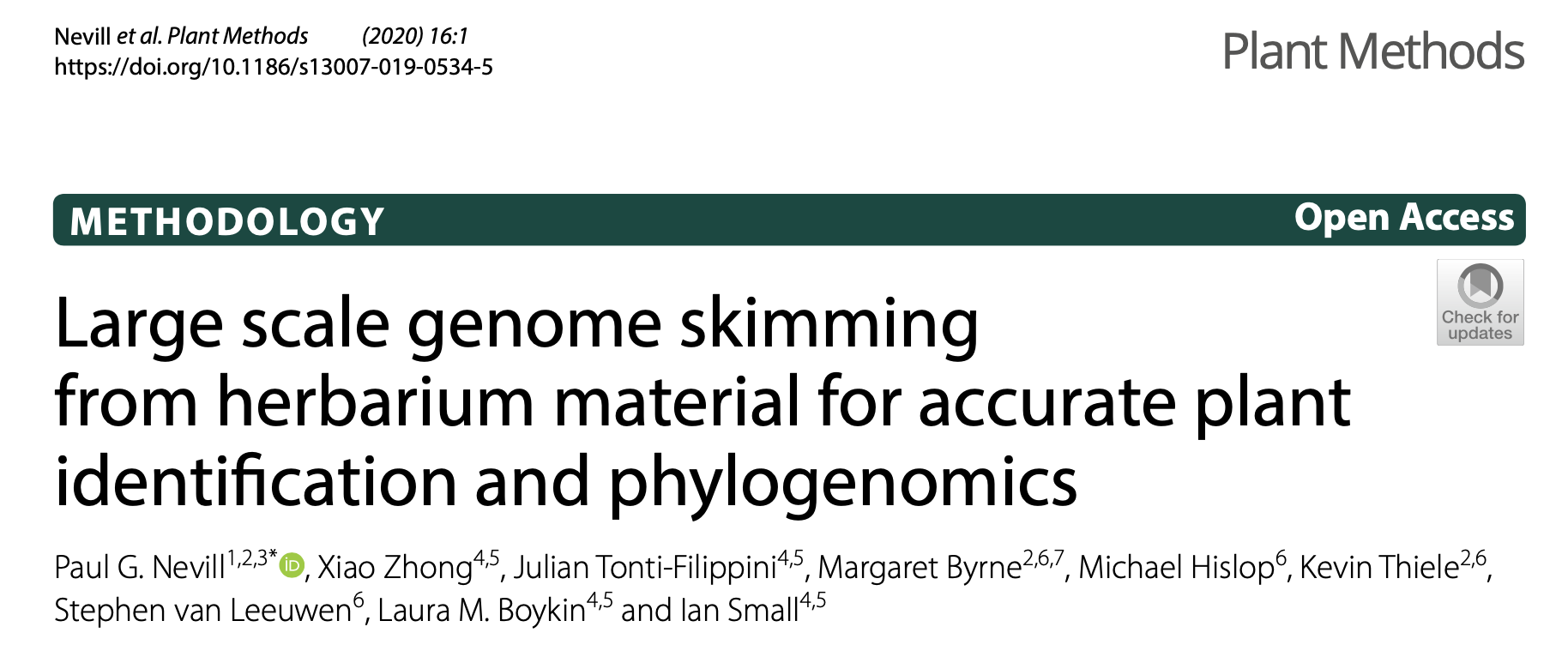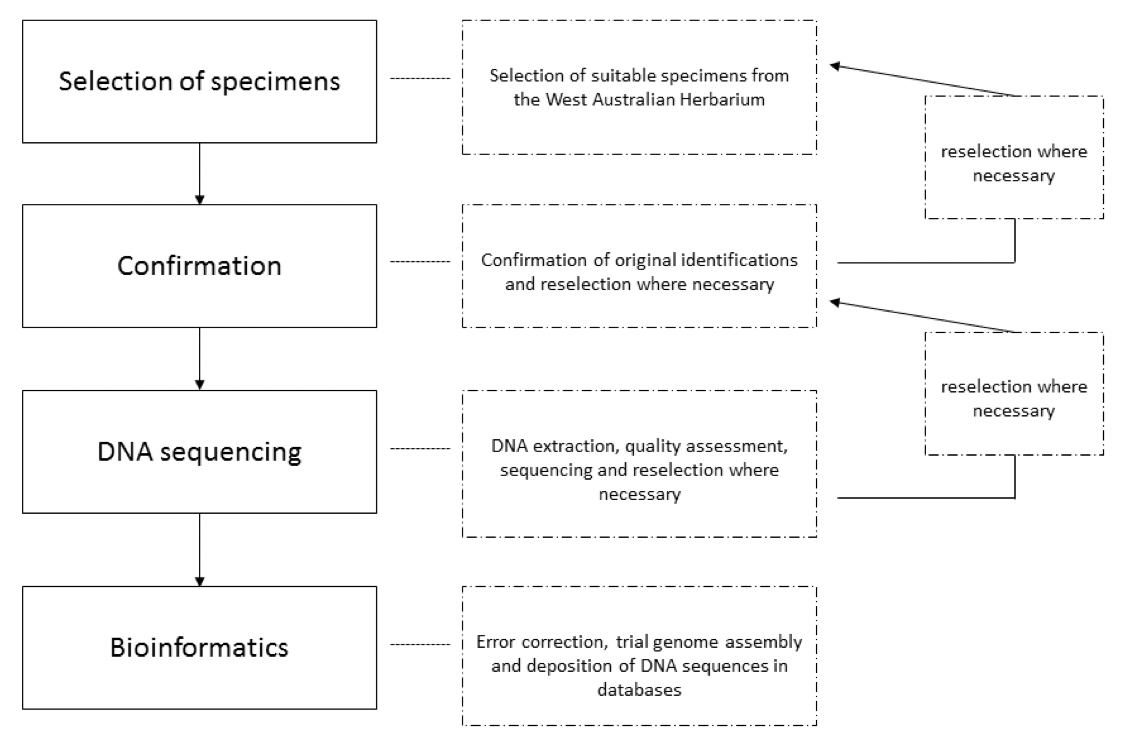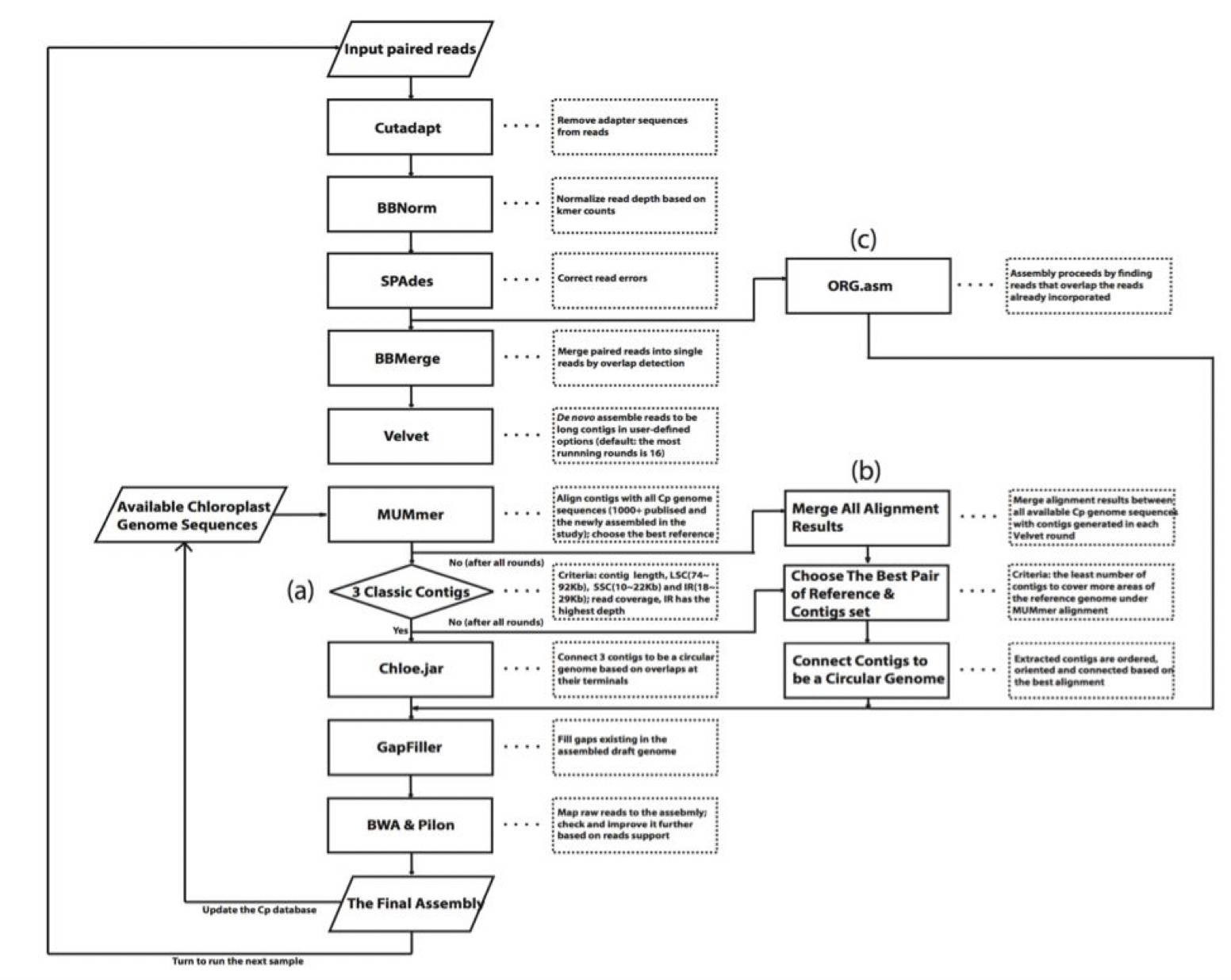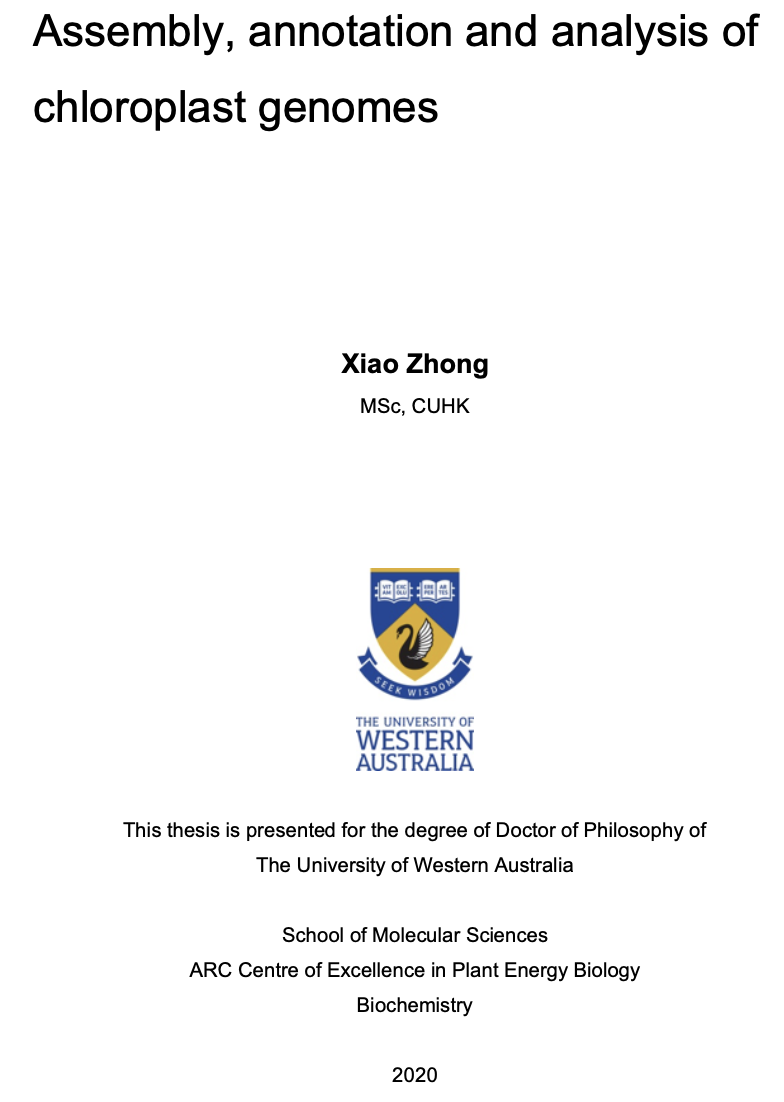最近看到一篇关于使用标本材料开展大规模浅层基因组测序来精准鉴定植物和系统发育基因组学研究的文章“Large scale genome skimming from herbarium material for accurate plant identification and phylogenomics ”,介绍了他们对采自澳大利亚Pilbara地区500多种植物的叶绿体基因组项目(Plastids of the Pilbara),2020年发表于Plant Methods(SCI 2区期刊,IF 3.61)。

原文链接:https://plantmethods.biomedcentral.com/articles/10.1186/s13007-019-0534-5
作者在文章中介绍了他们对西澳大利亚Pilbara地区672个植物标本样本进行了浅层基因组测序和分析的工作方法和流程。

图1. Plastids of the Pilbara项目的工作流程

图2. Plastids of the Pilbara项目DNA数据分析流程
现在使用浅层基因组测序获得细胞器基因组、rDNA等数据已是很成熟的方法,相关软件已有不少。这篇文章使用的主要拼接软件是ORGanelle ASseMbler (https://git.metabarcoding.org/org-asm/org-asm/wikis/home),注释软件是他们开发的Chloe( https://chloe.plantenergy.edu.au/annotate.html)。据其中1个作者Xiao Zhong在他的博士学位论文中评估,他们使用的软件比目前国内较多使用的软件GetOrganelle(昆植开发的)、PGA要略好些,这倒是值得去试试。
最重要的是这篇文章所产生的数据,采自西澳大利亚的672个样本,覆盖有21个科、142个属和530已定名及未定名种,其中禾本科(181)、豆科(132)、苋科(93)、锦葵科(76)、菊科(58)、草海桐科(24)、莎草科(19)、茄科(16)等数据较多。
其中菊类数据有:
Asteraceae: Bidens spp, Sonchus, Lactuca, Pleurocarpaea, Sigesbeckia, Pentalepis, Flaveria spp, Centipeda spp, Pluchea spp, Streptoglossa spp., Pterocaulon spp, Blumea spp, Iotasperma, Calotis spp, Peripleura spp, Vittadinia spp, Roebuckiella, Rhodanthe, Calocephalus, Chrysocephalum, Calocephalus, Gnephosis,Angianthus,
Stylidiaceae: Stylidium 2 spp.
Boraginaceae:Heliotropium spp.
Solanaceae: Solanum spp., Nicotiana spp.
Acanthaceae: Rostellularia spp.
Scrophulariaceae: Eremophila
Rubiaceae: Oldenlandia spp, Synaptantha, Spermacoce, Dentella, Psydrax
Apocynacee: Gymnanthera
Goodeniaceae: Scaevola spp., Goodenia spp., Velleia
作者因此还建了一个Plastids of the Pilbara网站:https://pilbseq.dbca.wa.gov.au/。

目前这个网站似乎还未完全建好,目前仅有一个系统树和取样表,序列blast还用不了,文章中提到的关联物种的描述、分布图、保护等级等metadata也都没有。
好在NCBI上已公开有原始数据:https://www.ncbi.nlm.nih.gov/bioproject/PRJNA522689/,不过拼接好的序列数据尚未上传到NCBI中,应该是数据本身还不算正式发表(尽管原始数据已释放),这篇文章只是介绍他们的方法。简单搜了下,还未见他们后续的数据分析文章。所以,我们尽可以用原始数据做分析,但倘若要因此发表文章,最好事先联系作者,以避免出现问题。
PS. 搜到其中一位作者ZHONG Xiao的博士毕业论文,可以较为详细了解他们在叶绿体基因组拼接和注释方面的详细方法:

转载本文请联系原作者获取授权,同时请注明本文来自张彩飞科学网博客。
链接地址:https://wap.sciencenet.cn/blog-56870-1289759.html?mobile=1
收藏


